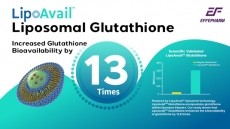Butterbur: leaf extract yields positive hayfever results
with skepticism by some scientists over the last few years, but the
largest trial conducted to date suggests that an extract from the
leaves of the herb is as effective at alleviating symptoms as a
common anti-histamine.
However the extract used in the study, Ze 399 from Zeller, is currently available only in Switzerland, where it is regulated as a drug. It may be, therefore, that the positive results observed are not applicable to root extracts, which are sold in the US in dietary supplement form.
Hayfever, also known as seasonal or intermittent allergic rhinitis, is estimated to affect around 20 percent of people in Western countries - although the true figure may be higher as in many sufferers it is not severe enough to lead them to consult a doctor.
The symptoms include sneezing, nasal secretions and watering eyes, and are most commonly caused by hypersensitivity to pollens - mainly tree pollen in springtime, grass and weed pollen in the summer and, sometimes, mould spores in late summer and autumn.
Butterbur (Petasites hybridus), is a plant native to Europe, northern Africa, and south western Asia. Its leaves and roots contain petasines, shown to inhibit leukotrienes, which may be associated with antispasmodic activity and anti-inflammatory action.
Previous studies into butterbur's ability to alleviate hayfever symptoms have delivered contradictory results. Last year researchers in Dundee published a small study in the Annals of Allergy Asthma Immunology (93(1):56-60) suggesting that butterbur root was more effective than placebo and as effective as fexofenadine at treating year-round (perrenial) allergic rhinitis, but not when it came to intermittent allergic rhinitis.
Notwithstanding this evidence, the Swiss and German team behind the latest research undertook the new study as IAR sufferers often find their work performance and quality of life is affected by the condition, and cast about for possible new treatment methods including, increasingly, herbal sources.
The randomized, double-blind study is published in Phytotherapy Research (Vol 19; Issue 6, pp 530-537). Involving 330 patients in 11 centers, it directly compared the effects of taking Ze 339 (containing 8mg of petasine per tablet taken three times a day), the anti-histamine fexofenadine (Telfast 180, one tablet taken once a day) and a placebo.
Led by Andreas Schapowal of the Allergy Clinic in Landquart, Switzerland, the researchers primarily measured for a change in symptoms during the day. They were also interested in changes experienced in the evening and at night, in physicians' assessments and in rates of response.
They found that both butterbur and the anti-histamine were significantly better at reducing symptoms than the placebo - and equally so.
What is more, the butterbur was seen to have a non-drowsy effect - a bonus that Schapowal said could make it particularly useful for patients who can not tolerate this side effect associated with other anti-histamines.
He concluded: "Despite being a herbal drug, Butterbur Ze 339 has now been subject to a series of well controlled trials and should be considered as an alternative treatment for IAR."
Zeller's export manager, Dr Oliver Hegener, told NutraIngredients-USA.com that when Ze 399 is rolled out internationally, its regulation as a drug or an herbal ingredient is likely to vary depending on the market.
As it is a special extract from the leaves of the plant, rather than the root as in the case of butterbur in dietary substances, it has to be recognized as a completely different substance.
Marketed as Tesalin, it is claimed to be virtually free of hepatotoxic pyrrolizidine alkaloids, which have been connected to liver toxicity. In Ze 399, these alkaloids were reduced to minimal levels through selection of suitable plant material, and any remaining traces eliminated in the extraction process.
"It is known that in the root material there are higher levels of the alkaloids," said Dr Hegener, but in the majority of countries regulations will ensure that these are kept within safe limits.
The new study is not the first time that Schapowal has compared ZE 339 to a conventional drug. In a study published in the British Medical Journal in January 2002, he showed it to be as effective as cetirizine.
Despite cetirizine being considered a non-sedating drug, it was found to be more drowsiness- and fatigue-inducing than the butterbur.
Research has also indicated that the herb's root may be effective for migraines in adults and children.













